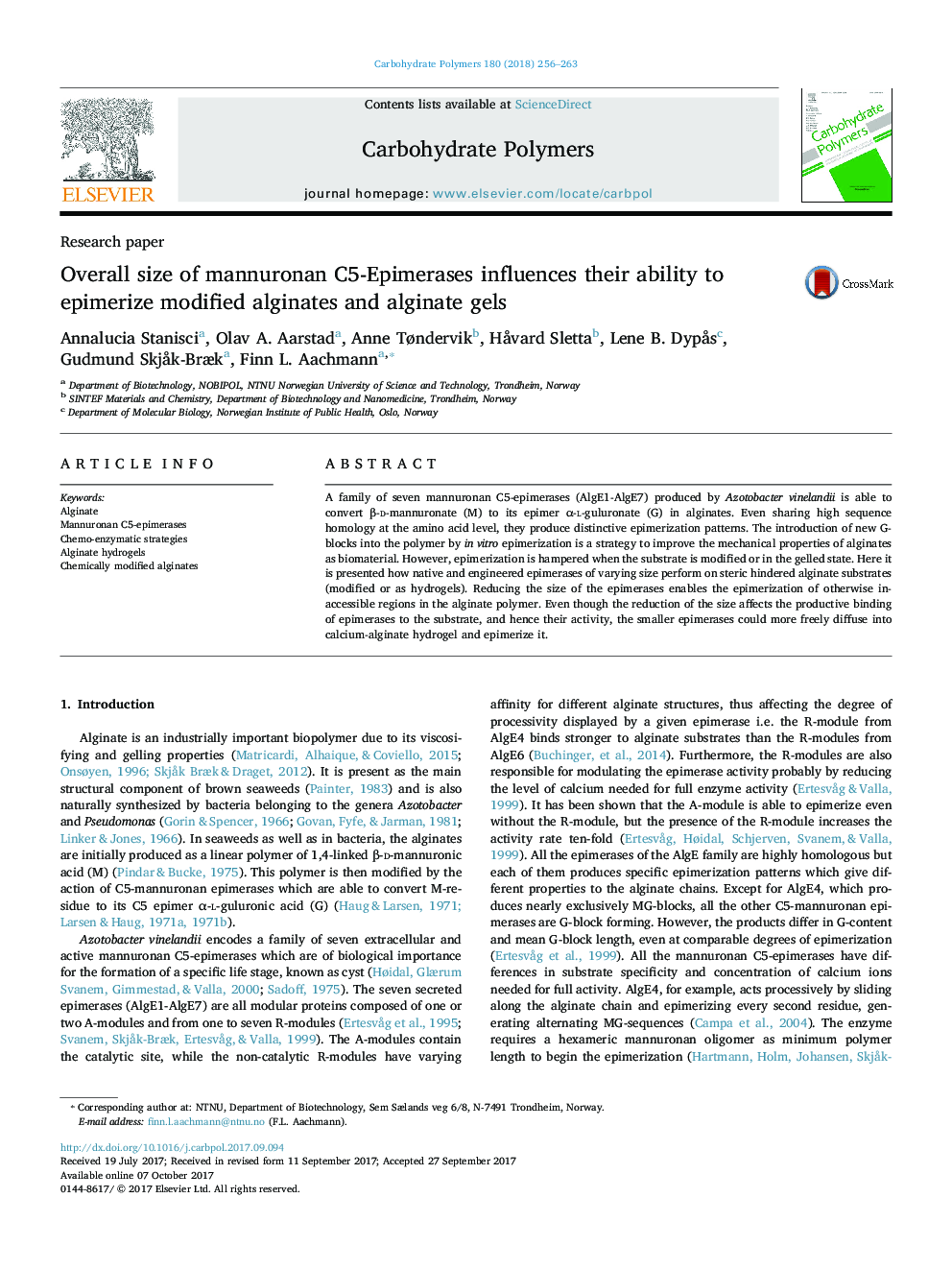| Article ID | Journal | Published Year | Pages | File Type |
|---|---|---|---|---|
| 5156376 | Carbohydrate Polymers | 2018 | 8 Pages |
Abstract
A family of seven mannuronan C5-epimerases (AlgE1-AlgE7) produced by Azotobacter vinelandii is able to convert β-d-mannuronate (M) to its epimer α-l-guluronate (G) in alginates. Even sharing high sequence homology at the amino acid level, they produce distinctive epimerization patterns. The introduction of new G-blocks into the polymer by in vitro epimerization is a strategy to improve the mechanical properties of alginates as biomaterial. However, epimerization is hampered when the substrate is modified or in the gelled state. Here it is presented how native and engineered epimerases of varying size perform on steric hindered alginate substrates (modified or as hydrogels). Reducing the size of the epimerases enables the epimerization of otherwise inaccessible regions in the alginate polymer. Even though the reduction of the size affects the productive binding of epimerases to the substrate, and hence their activity, the smaller epimerases could more freely diffuse into calcium-alginate hydrogel and epimerize it.
Keywords
Related Topics
Physical Sciences and Engineering
Chemistry
Organic Chemistry
Authors
Annalucia Stanisci, Olav A. Aarstad, Anne Tøndervik, Håvard Sletta, Lene B. Dypås, Gudmund Skjåk-Bræk, Finn L. Aachmann,
